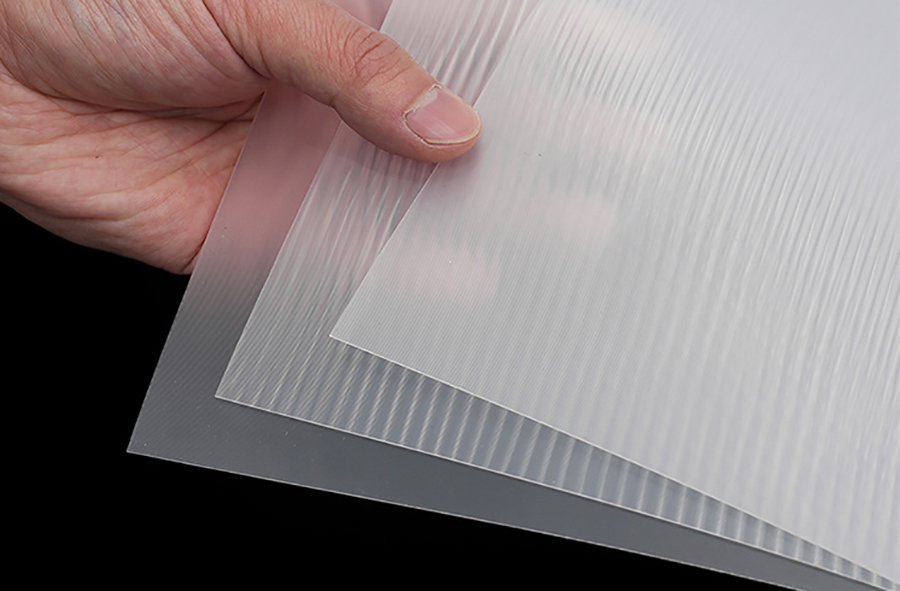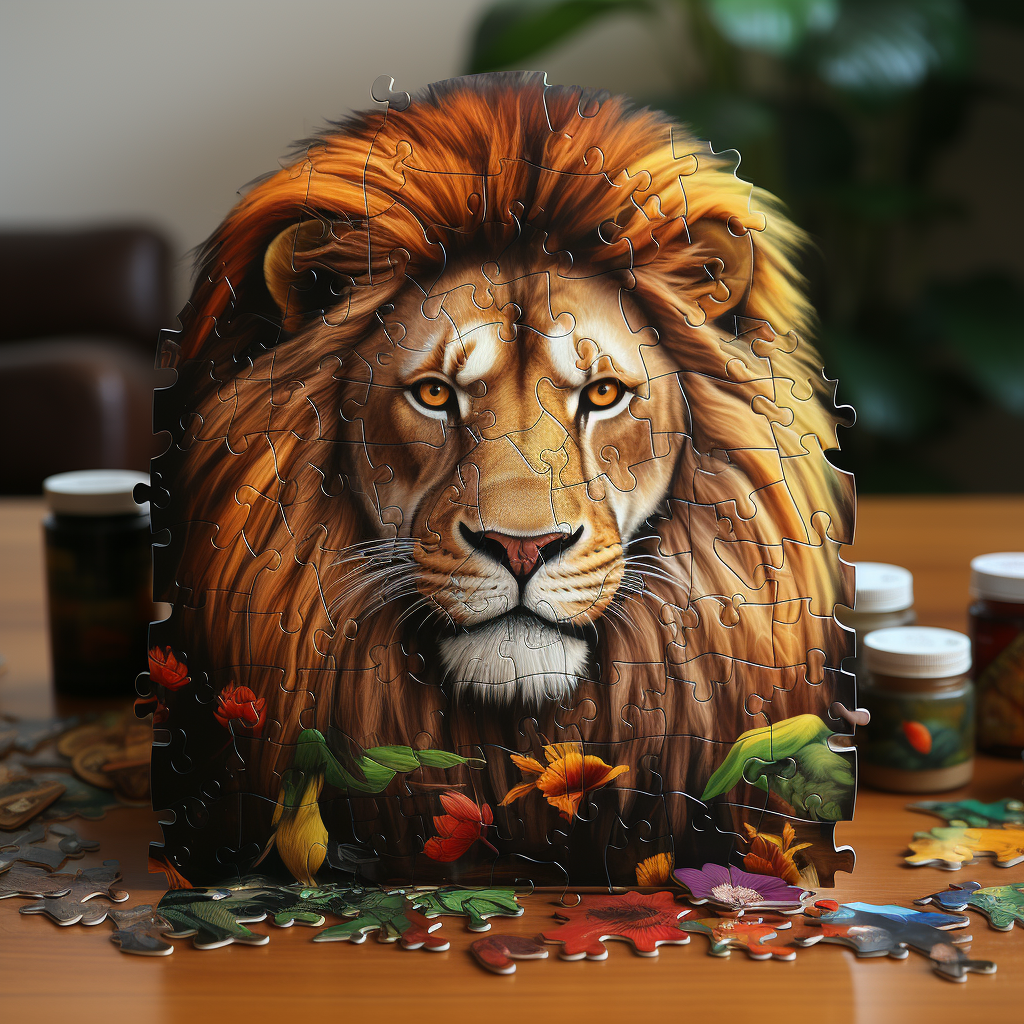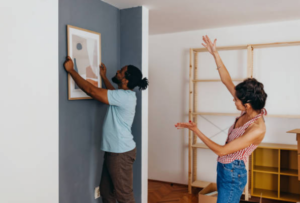Introduction
Technology has permeated every aspect of our lives, and puzzles are no exception. Using lenticular printing technology can transform a simple jigsaw puzzle into a one-of-a-kind puzzle.
The dynamic lenticular effects provide a captivating and interactive, fun and challenging, puzzle-solving experience.
As you assemble the puzzle, you can see the images come to life right before your eyes. And when you have done it, the result is a beautiful and captivating piece of art to admire and display.
Are you curious about lenticular jigsaw puzzles and wondering how they work? According to this article, we cover everything you wish to know about these kinds of puzzles, from the meaning of lenticular puzzles to how they work and are designed and printed.
If you want to create and print lenticular puzzles, this guide will also enlighten you on the options available and what the manufacturing process entails.
[ez-toc]
What are Lenticular Jigsaw Puzzles?
Lenticular puzzles are a type of puzzle that feature dynamic images. These puzzles are crafted with special lenses that create the illusion of movement or depth.
Unlike traditional puzzles with static images, the images on lenticular puzzles appear to gain dimension, morph or move as you tilt the puzzle pieces or change your viewing angle.
They are referred to as lenticular puzzles because they make use of lenticels. These are a series of convex lenses that bulge out at the center and look like lentils.

Who Likes Lenticular Jigsaw Puzzles?
Thanks to their captivating visual effects, lenticular jigsaw puzzles are fun and exciting to put together for all age groups. Different lenticular jigsaw puzzles have varying difficulty levels ranging from easy to challenging to assemble. This means there’s something for beginner, intermediate, and experienced jigsaw puzzlers. On top of this, lenticular puzzles come in various themes. Anyone can find a mystery that suits their personality and interests.
Assembling lenticular jigsaw puzzles is an entertaining and intellectually stimulating activity for adults. The dynamic effects add a new challenge that engages the mind and brings about a great sense of accomplishment, even for avid jigsaw puzzlers.
Children enjoy playing with lenticular jigsaw puzzles. The illusion of movement or change captures their short attention span and makes the puzzles fun to assemble. Lenticular puzzles for kids can feature beloved cartoon characters or deliver educational content.
Since these puzzles are designed with specific audiences in mind, manufacturers usually indicate the recommended age range on the packaging.
Lastly, these one-of-a-kind puzzles also appeal to collectors. They are novelty creations and will make great additions to any collection. On top of this, the visual effects also raise the perceived value of lenticular puzzles.

How Does a Lenticular Image Work?
Now that you know what lenticular jigsaw puzzles are, let’s take a closer look into how lenticular images work so you can understand how these types of puzzles deliver fantastic visual effects.
Lenticular images make use of lenticular lenses to simulate movement, change, or depth.
A lenticular image is composed of a composite image mounted or printed onto the underside of a transparent sheet consisting of a series of lenses. These lenses can be made of PETG (a type of polyester), acrylic, or polystyrene.
The composite image is made of alternating slices of the puzzle images. The lenses are designed in a pattern that will reveal the image sections in the desired order and bring out the intended visual effect.
These lenses translate the composite image into a changing or moving image. They bend and direct light in such a way as to reveal certain parts or versions of the image depending on the viewing angle.
The eye sees multiple image sections in sequence, and the divisions blur together to create the illusion of change, depth, or motion.
Lenticular puzzles can be produced in different sizes, shapes, themes, and complexities. Various factors determine how the visual effects play out when the mysteries are viewed or moved. These include:
Resolution or Pitch (LPI): The resolution or pitch of a lenticular lens refers to how fine the lens material is and is expressed in lenticulers per inch (LPI). Finer lenses are ideal for images with fine details, while coarser lenses allow greater viewing distances without losing precision.
Thickness: Lenticular thickness ranges from 0.033 to 0.15 inches. Lenses with a lower LPI are usually thicker than those with a higher LPI. 3D effects require thicker lenses, while motion effects require thinner lenses.
Viewing Angle: Lenticular images are created with a specific viewing angle in mind. Lenses with narrow viewing angles produce 3D effects where quick flipping is required. Wider viewing angles, on the other hand, are used to create the illusion of movement.
Viewing Distance: Different types of lenticular lenses exhibit different qualities when viewed from different distances. Fine LPI lenses are ideal for shorter viewing distances (1 – 10 feet), while coarser lenses work well for long viewing distances (5 – 30 feet).
How are Lenticular Puzzles Made?
People create Lenticular puzzles by using lenticular printing technology. This specialized printing method entails segmenting and interlacing images and then applying them onto lenticular lenses. Here is an overview of the lenticular puzzle creation process:
Phase 1: Planning and Preparation
The very first thing to do is determine what kind of lenticular puzzle to create. Do you want the puzzles constructed with plastic, cardboard, wooden, or crystal materials?
You can order lenticular puzzles with standard features or go the custom route. If you prefer to personalize your puzzle to your specifications, you must determine the size, thickness, shape, materials, and number of pieces in the puzzle.
Figure out the puzzle’s theme and the images or concepts you want to showcase. What type of lenticular effect do you want to display on the puzzle images?
Depending on the theme or content you want to convey, the puzzle images can be designed to create the following effects:
- Lenticular Flip: An image suddenly changes into another image as the puzzle is tilted or viewed from a different angle.
- 3D Lenticular: 3D effects simulate dimension and depth so the image appears to pop into a striking three-dimensional image when viewed with the naked eye.
- AnimationLenticular: The puzzle comes to life with eye-catching animation that simulates movement.
- Lenticular Zoom: The image seems to zoom outwards or inwards as the puzzle is tilted.
- Lenticular Morph: An image appears to morph into another image gradually. It’s a significant effect when you want to showcase an evolving character.
- There are other types of lenticular effects, such as turn, twirl, twist, burst, compress, rotate, and explosion.
Phase 2: Image Design and Processing
The next step is to prepare a digital file with the images you want to display on the puzzle.
This digital file is what you will present to your lenticular puzzle manufacturer of choice, along with the other requirements for the project. You can also engage our puzzle designers to design your lenticular artwork and bring your vision to life.
You can use Photoshop, Illustrator, or PDF to prepare the artwork. The graphics should have a minimum resolution of 300 DPI, and all elements should be editable. The colors should be in CMYK format. As you design the artwork, leave a 3-6mm ((1/8 to 1/4 inches) bleed line on all sides. For 3D effects, this allowance should be at least 1/2 inch.

Remember that white, black, and solid color backgrounds don’t work well with lenticular images. Additionally, it would be best if you didn’t go from a high-contrast element to another high-contrast element.
When you submit the files, the graphic designer will prepare and optimize the images for lenticular printing.
Using a specialized graphics application, the designer will cut the images into thin strips and layer them on each other. This process of arranging the multiple image slices in an alternating order is called interlacing.
This is a critical step because it determines the outcome. Whether the puzzle will exhibit the desired visual effect depends on how the images are processed.
Phase 3: Printing and Mounting
The interlaced image file is now ready for printing. Lenticular puzzle printing is typically done on commercial inkjet printers. The interlaced graphic is printed on conventional card stock.
The resulting lenticular print is a composite of images that looks like a jumble of ideas and doesn’t make any sense. That is where lenticular lenses come in to translate the composite graphic into a changing image.
The interlaced graphic print is mounted onto the back side of the lenticular lens. While this may sound simple, it’s a delicate process that demands the utmost precision in order to render the desired effect.
First, the lenticels have to be identical in size to the slices of images. Furthermore, each lenticular and the corresponding image slice must be in perfect alignment. Poor image design and alignment can lead to defects such as image ghosting or puzzle pieces failing to fit together well.
Alternatively, the interlaced graphic can be printed directly onto the back of the lenticular lens sheet. However, this lenticular printing technique is more complex and requires a specialized printing setup composed of UV inkjet printers and UV-cured inks. Although this method eliminates the lamination process, accurate alignment is still critical.
Lastly, a protective covering is applied to the backside of the puzzle. The completed lenticular puzzles are then inspected, assembled, and packaged in readiness for shipping to the owner.
Who Designs and Imports Lenticular Puzzles?
Thanks to their strong visual appeal, lenticular puzzles are prevalent puzzle formats. They are the go-to for any individual, business, or organization looking to create innovative, unique, and memorable puzzles that make an impact.
As a top lenticular puzzle maker in China, Jabay Games has served all kinds of lenticular jigsaw puzzle designers and importers, including:
Puzzle designers and publishers, retailers, and specialty puzzle stores offer innovative puzzle options to puzzle enthusiasts all over the world.
Companies and advertising agencies design and create lenticular puzzles as promotional tools. The lenticular effect offers a great way to deliver promotional messages and strengthen brand recognition. For example, the images on the mystery can be designed to showcase a logo, product, or advertisement in an eye-catching and captivating manner.
Organizations, institutions, and event organizers also have lenticular puzzles made to commemorate special occasions or mark significant events. Even some designers, artists, and other creators translate their best works into puzzle format.
Lastly, individuals and families also order lenticular puzzles featuring their favorite photos or personalized gift ideas. For example, couples can create a lenticular wedding or anniversary celebration animation puzzle.

Conclusion
I hope this guide on lenticular Jigsaw puzzles has answered all your questions. These are innovative types of puzzles created by combining state-of-the-art graphics technology with specialist printing methods.
The lenticular effects add visual interest and make the puzzle-solving experience even more fun, challenging, and satisfactory.
However, lenticular puzzle printing requires top-notch precision and attention to detail. The images must be prepared, printed, and mounted precisely right so the puzzle looks and works as envisioned and delivers a superb puzzle-solving experience.
Suppose you’re designing a lenticular jigsaw puzzle. In that case, it’s essential to partner with a skilled and experienced lenticular puzzle maker who understands the intricacies of lenticular design and printing and has the expertise to make high-quality lenticular jigsaw puzzles.
At Jabay Games, we are lenticular puzzle printing experts! With 12+ years of experience in the industry, we’ve served puzzle designers, puzzle retailers, organizations, companies, and individuals.
We use the latest graphic and printing technologies to create lenticular puzzles that provide the best impression.
Our experienced design and printing team will work with you and help you create a stunning lenticular puzzle. Contact us today to get started on your project.
[wpforms id=”2549″]







